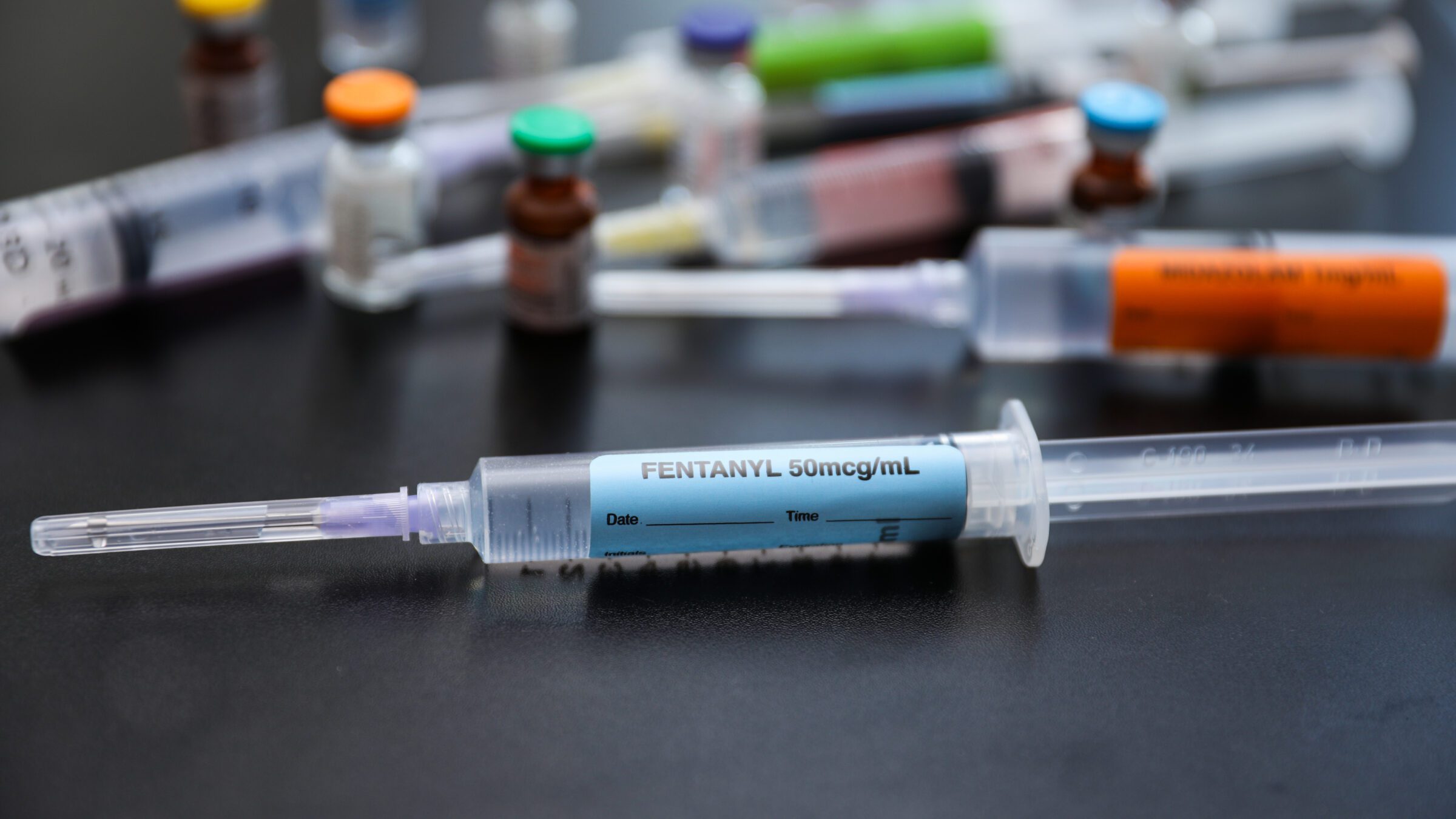Fentanyl is one of the most commonly misused synthetic opioids in Alabama, as well as other U.S. states. Like methadone, oxycodone, and morphine, fentanyl has both medical and illicit uses. In the medical field, fentanyl is an anesthetic and analgesic that helps patients overcome pain, especially after surgery.
However, this opioid is also illegally sold and used. Illegally manufactured fentanyl is often mixed with heroin, cocaine, and other illicit drugs, and its abuse can be fatal. In Alabama, fentanyl abuse has reached worrying levels, contributing to a growing public health crisis that demands urgent attention and intervention
.Download the Connect Alabama App for resources like crisis lines, treatment, recovery housing, and more.
Download the Connect Alabama App
Resources for Help in Alabama
Helplines
- 988 Suicide & Crisis Lifeline
- 1-844-307-1760 Alabama Department of Mental Health Helpline for substance use disorders
- Visit the Connect Alabama app for additional free resources
Local Substance Use Disorder Support Programs
- Recovery Organization of Support Specialists (ROSS): Provides peer support to empower those seeking recovery. Call 205-848-2112.
- People Engaged In Recovery (PEIR): Offers peer mentoring and support groups to people recovering from substance use disorders. Call 888-421-7347.
Council on Substance Abuse (COSA): Provides recovery support for alcohol addiction and substance abuse. Call 1-877-HELP-4AL (1-877-435-7425) for assistance.
- Pharmacies: Many pharmacies offer naloxone without a prescription.
- Community Health Centers: These centers often provide naloxone as part of their services.
- Outreach Programs: Various community outreach programs distribute naloxone to those in need.
- Mobile Units: Some organizations use mobile units to distribute naloxone in rural or underserved areas.
- Mail-Order Programs: Some programs allow individuals to order naloxone by mail.
- SAMHSA National Helpline: Call 1-800-662-HELP (4357) for 24/7 substance use & mental health support.
- Partnership to End Addiction: Call 1-855-378-4373 for family support for addiction.
- Never Use Alone Hotline: 800-484-3731 or 877-696-1996.
Download the Connect Alabama App to access more resources, including crisis lines, treatment, recovery housing, and more.
Download the Connect Alabama App
What Is Fentanyl?
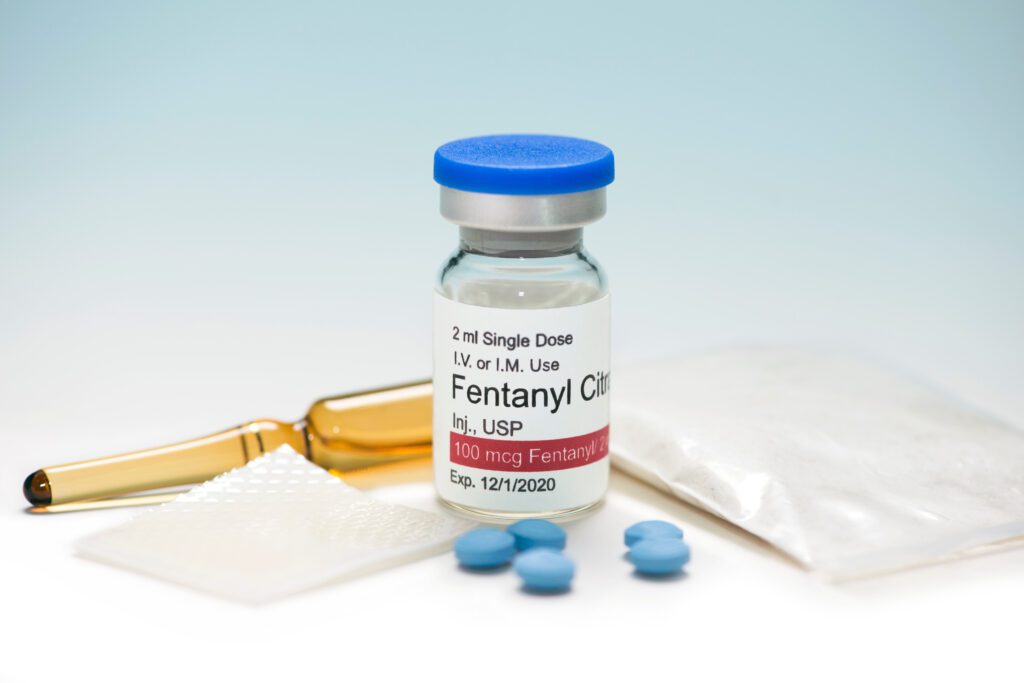
The History of Fentanyl
According to the US Department of Drug Enforcement Administration, fentanyl was first approved for medical use in the United States in 1968. However, it was developed in 1959 by Dr. Paul Janssen, who owned the Janssen Pharmaceutical Company. Fentanyl usage has since evolved to include illicit use and abuse.
When used appropriately under medical supervision, fentanyl provides chronic pain relief for cancer patients and people undergoing major surgeries. Additionally, fentanyl is often prescribed to patients who have developed a tolerance to other opioids, which offers effective pain management when other treatments fall short.
How Fentanyl Is Used Legally and Illegally
Administered through fentanyl patches, injections, and lozenges, the opioid is legally used as an anesthetic or prescribed for severe pain relief.
Illegally, fentanyl is injected, sniffed, or taken as a pill to provide a sense of euphoria. It can be mixed with illicit substances like cocaine and heroin to make a more potent and hazardous substance.
The Dangers of Fentanyl
Why Fentanyl Is So Dangerous
There are several reasons why fentanyl is dangerous and raising concerns across the U.S. For one, fentanyl is 50 times more potent than heroin and 100 times more potent than morphine. Its high potency also makes it addictive and increases the risk of an overdose.
Another concern is the prevalence of unintentional fentanyl consumption, which has become a leading cause of overdose. Many users unknowingly ingest fentanyl when other drugs, such as counterfeit pills, cocaine, or heroin, are contaminated with it. This contamination can happen because of cross-contact from reused surfaces, packaging, or deliberate mixing.
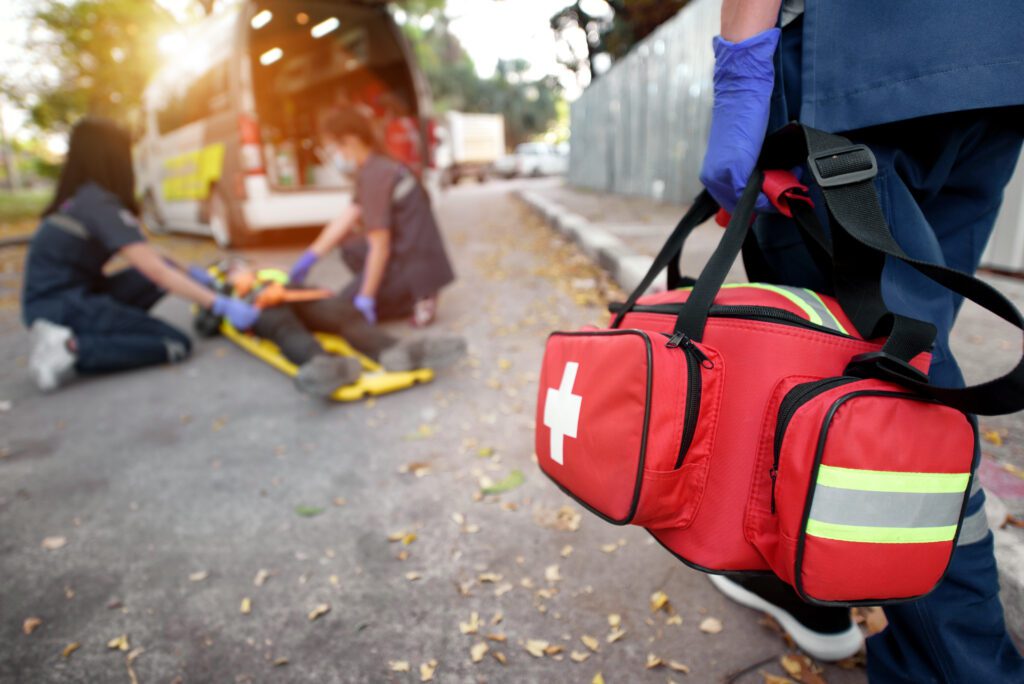
Common Symptoms of Fentanyl Overdose
Here are signs someone has had an opioid overdose:
- Slow and shallow breathing
- Discolored skin (blue nails or lips)
- Unconsciousness or unresponsiveness
- Pinpoint pupils
- Drowsiness
If you find a suspected fentanyl overdose, call 911 immediately. If you carry naloxone, which is a life-saving medication that can reverse the effects of opioids, administer it right away. Naloxone is available as a nasal spray and has been approved by the U.S. Food and Drug Administration for over-the-counter sale to help save lives. As such, you don’t need to be a healthcare professional to administer naloxone.
Download the Connect Alabama AppStatistics on Fentanyl in Alabama
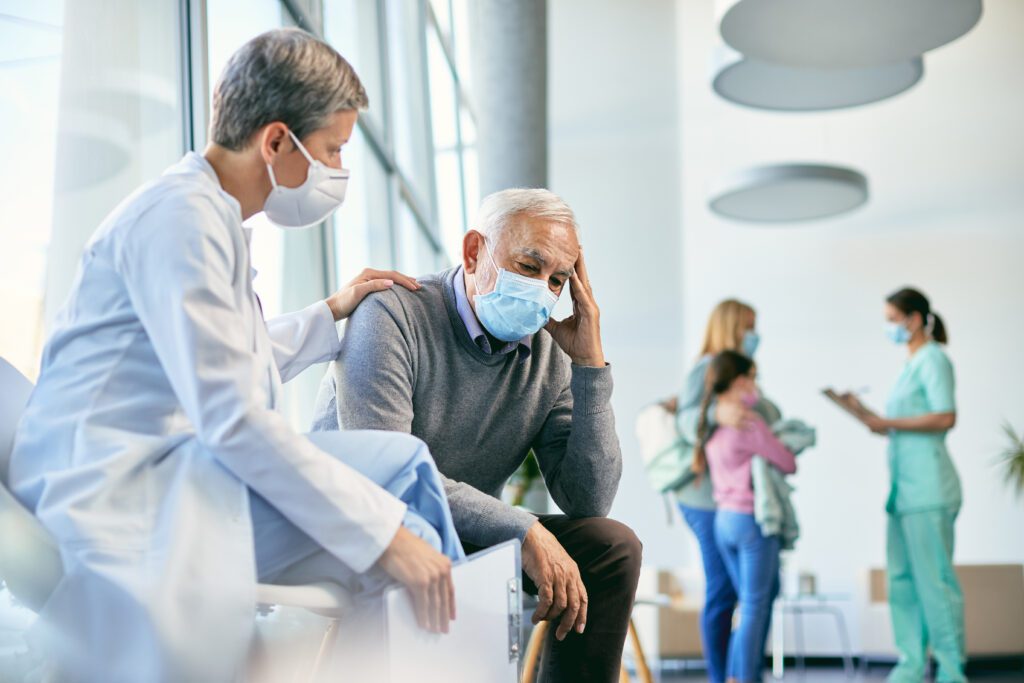
-
Overdose Rates in Alabama
Over the past decade, Alabama has experienced a sharp rise in fentanyl-related overdoses. Per the 2024 Alabama Opioid Overdose and Addiction Council Report, there were 266 confirmed fentanyl overdose deaths between January and October 2024.
Fentanyl-related deaths peaked in 2023, with 1,492 confirmed fatalities, equating to approximately 31.5 deaths per 100,000 people. Nationwide, an estimated 107,543 deaths from opioid overdoses were reported across the U.S. in 2023.
What is most concerning is that these figures primarily reflect deaths linked to fentanyl, highlighting its particularly lethal impact compared to other opioids.
Fentanyl affects Alabama communities in many ways. For example, prolonged use can increase tolerance, which can affect the drug’s ability to relieve pain even for people with legitimate medical needs. Because it’s often used with other substances for a stronger high, fentanyl’s prevalence has fueled the sale and use of drugs like heroin and morphine.
In response to this escalating crisis, initiatives like Odds Are Alabama have been launched to raise awareness about the dangers of fentanyl abuse. It remains critical that Alabama’s government and residents work together to bring these numbers down.
-
Age Groups Most Affected
The most affected age group by the opioid crisis is young adults. Of the 107,543 cases reported in 2023, 52 percent are people between 18 to 44 years old.
Older adults are also at risk of accidental exposure. Many overdose cases in this age group result from unintentional fentanyl ingestion, often due to contaminated substances or prescription misuse.
-
Trends in Fentanyl-Related Deaths
While there has been a slight decline in fentanyl-related deaths recently, the overall trend over the past decade remains upward. This recent decrease can be attributed to the efforts of multiple sectors, including law enforcement, which has played a crucial role in disrupting the illicit drug trade, and public health agencies, which continue to raise awareness about the dangers of fentanyl.
Public education is especially useful in reversing this trend, helping people recognize the risks and understand how to access legitimate, uncontaminated fentanyl when medically necessary.
Prevention and Education
How to Talk About Fentanyl with Loved Ones
Fentanyl awareness and education shouldn’t be left to law enforcement and public health officials. Everyone has a role to play in preventing the opioid crisis from claiming more lives in Alabama and across the U.S. Here’s how to approach a conversation about fentanyl with a loved one:
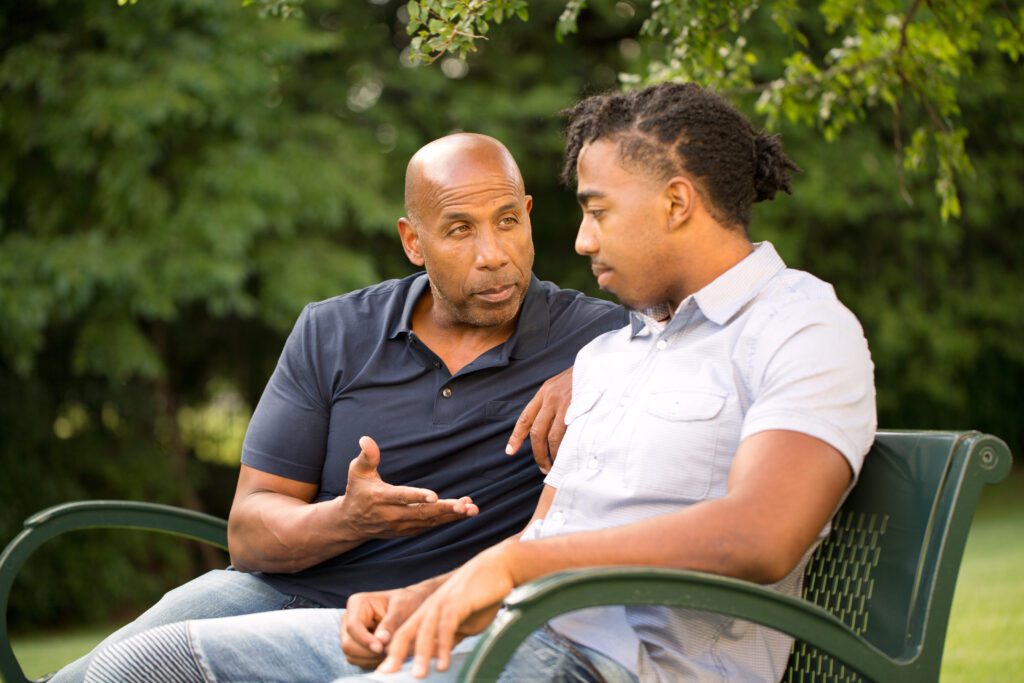
-
Avoid Judgment
Make it clear that you are coming from a place of care and support, not criticism.
-
Connect Them to Medical Care
If you suspect opioid use, encourage them to speak with a healthcare provider about medical tests, harm reduction, and treatment options.
-
Share Reliable Information
Provide resources that can help them better understand the life-threatening effects of illicitly manufactured fentanyl.
-
Teach Them How to Recognize an Overdose
Educate about key symptoms of an overdose, including slow or stopped breathing, unresponsiveness, pale or clammy skin, and blue lips or fingernails. Stress the importance of calling 911 immediately and using naloxone if available.
Signs of Fentanyl Exposure and What to Do
Many people worry that simply smelling second-hand smoke from someone using fentanyl could cause an overdose. However, exposure through smell alone isn’t enough to cause an overdose or other serious effects.
Similarly, skin exposure is unlikely to result in an overdose. Significant exposure typically occurs only through inhalation or ingestion of the drug.
If you believe you have been exposed, take the following steps to stay safe:
- Move away from the point of exposure
- Stay in a well-ventilated area, preferably outdoors
- Wash your hands thoroughly with soap and water
- Seek medical help immediately if you experience any symptoms of an overdose
Educational Programs Available in Alabama
Alabama offers several valuable resources to help residents understand fentanyl risks, recognize overdose signs, and access support, including:
- The Alabama Department of Public Health (ADPH) offers comprehensive, up-to-date information about fentanyl and other opioids
- The Connect Alabama App provides easy access to information, support services, and medical assistance for those affected by substance use
- The Opioid-Impacted Family Support Program seeks to increase the pool of paraprofessionals serving families, youth, and individuals affected by opioid and other substance use disorders

